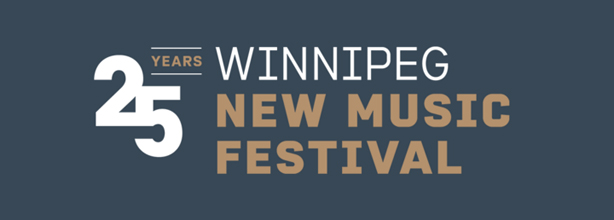“What is twenty-first century music?” This was the question briefly debated by composer Derek Charke and conductor/composer Gary Kulesha during the Tuesday, January 26 program of the WNMF. Not surprisingly, the first answering phrase was this: “hard to pin down.” Is it tonal, minimal? Does it embrace or even admit the venerable standards of melodic development, of integration? Submit them to radical questioning? In various ways the four brand-new works played by the Winnipeg Symphony Orchestra on the festival’s fourth evening demonstrated that crazy values like melody, unity, lyricism, and (yes) humanity are still in play.
The Randolph Peters composition Thermokarst, with its thematic basis in concerns about global warming (a thermokarst is a problematic sink-hole in permafrost), concluded with a rather menacing sense of falling, after undertaking some appropriately brooding, eerie northern investigations. (The brass players in the balcony were, I decided, the cruel insects who once nearly destroyed my sanity in Churchill.) Glenn Sutherland’s piece To See Again with Spirit Eyes, with its similarly dramatic ending and some strong writing for strings, occasionally felt a little random, but revealed intriguing textures, and the audience appreciated it.
But it was Gary Kulesha’s Echoes of Light, which echoed not only light but also (it seemed to me) canonical sounds from Strauss (Also sprach Zarathustra) and Dvorak (New World Symphony), and Derek Charke’s Earth Airs, with its engaging buoyancy, that demonstrated how much wholeness and affirmation there still can be within new classical music. New music can appear stubbornly determined to take the elements of music apart to show the spaces between things. In this concert, Charke in particular was fearlessly putting some of those pieces back together. His emotional symphony (beautifully engaging the human voice, here represented by the feisty and articulate Horizon Choir) managed to reach out, not push away.
It is a custom at the New Music Festival that audience members can, if they wish, sit in the wings, and I took that opportunity. This throws the acoustical mix out of whack, of course, but the gain is in realizing how deep a symphony orchestra is. From the regular seats, we are presented primarily with strings; from the stage, everybody else swings into view. It’s been years since I sat on stage, but once during Bramwell Tovey’s tenure as conductor I recall him dancing on stage with his wife. That’s the sort of cool thing you miss if you stay in the safety of the stalls.
The audiences this week have been smaller than one might expect at such an important festival, and the absenteeism of big corporate benefactors is very evident. I do not lament the removal of Big Tobacco from Canadian cultural events of years past, and the disappearance of Centara, Investors Group, and the like as WNMF partners merely makes me feel vindicated for my lack of faith in corporate sponsorship. This was not, after all, the trustworthy patronage button that our cultural organizations needed to be pushing. So, this is a quieter festival, but one that feels more authentic. People and music: no bombast, no flashy parties.
Sue Sorensen would not be averse to going to one flashy party, however, if it featured lots of cheese.
